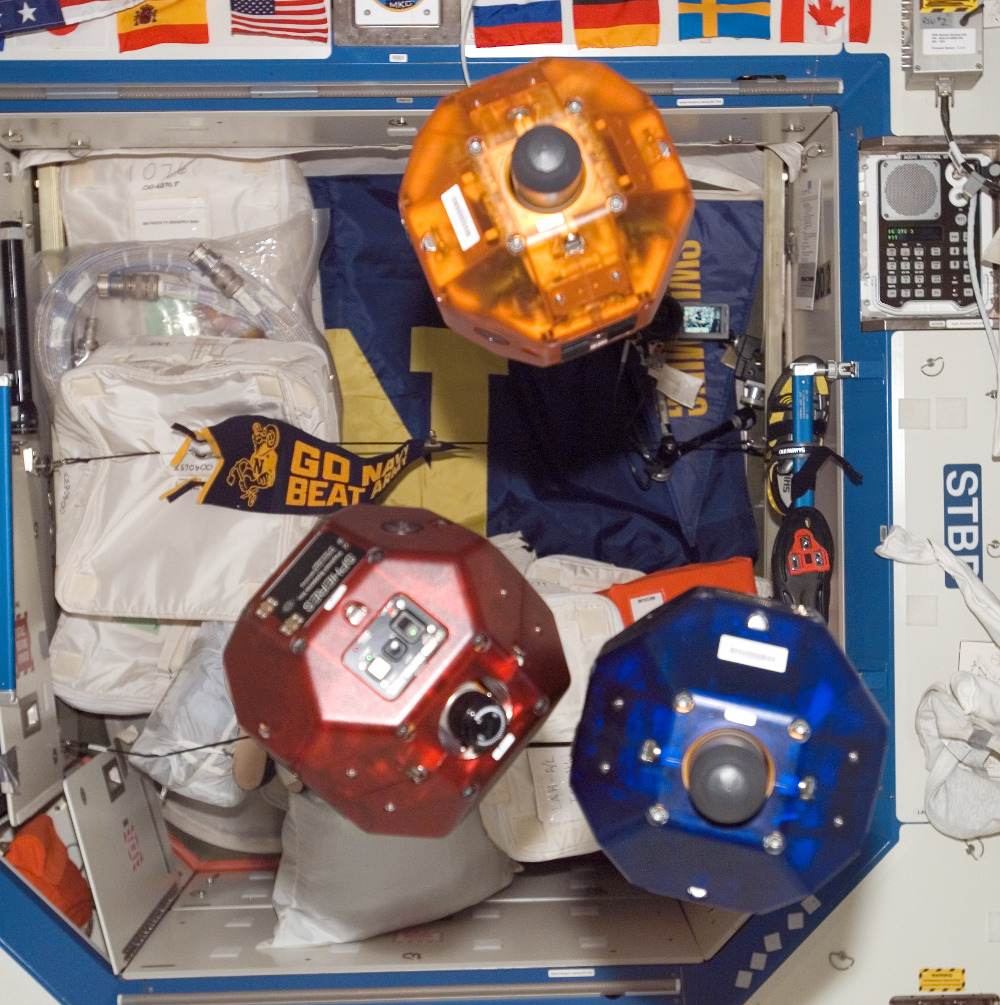Evolutionary robotics for satellite swarms

Is it possible to evolve the controllers of satellites in a swarm to bring about coherent swarm behavior? Does the evolutionary robotics approach have any advantages with respect to state-of-the-art control methods for satellites?
Study Description
Evolutionary robotics is a methodology in which a robot's controller is not designed by a human designer, but in which the controller is adapted to a task by an artificial evolutionary process. Typically, a neural network serves as the controller, with the evolutionary algorithm optimizing the network's parameters to the task. In this project, the evolutionary robotics (ER) methodology was applied to the control of satellites in a swarm. The intention was to do a full-round application of the ER methodology, incrementally moving from straightforward simulations to more complex ones, with a test with the spheres on the International Space Station as final goal.
As a first step, a straightforward kinematic simulation was used to evolve small feedforward neural networks for the task of reaching a specific formation. The evolved neural networks were able to reach such a formation with very high precision in the simulator. An additional network had been evolved for attitude alignment of the satellites, with equal success. As a subsequent step, the controllers had been tested in the MIT Spheres simulator, validating the results of the simpler kinematic simulations.